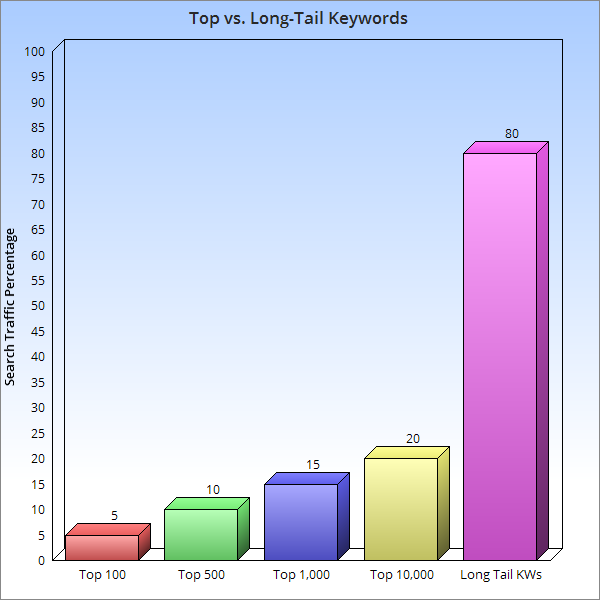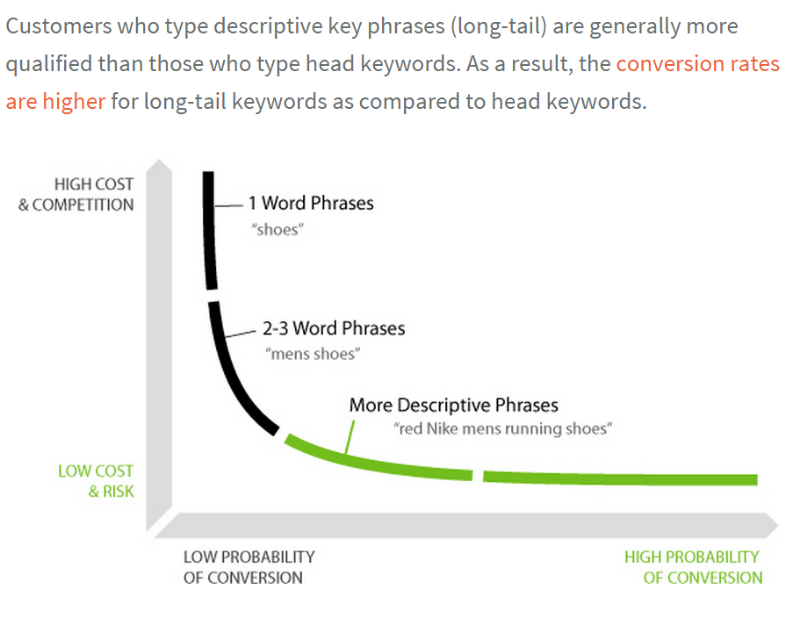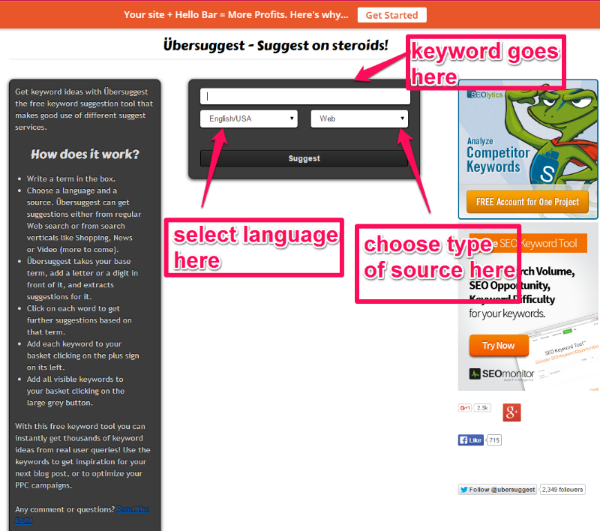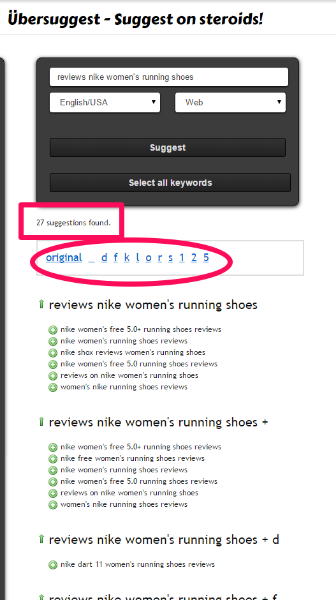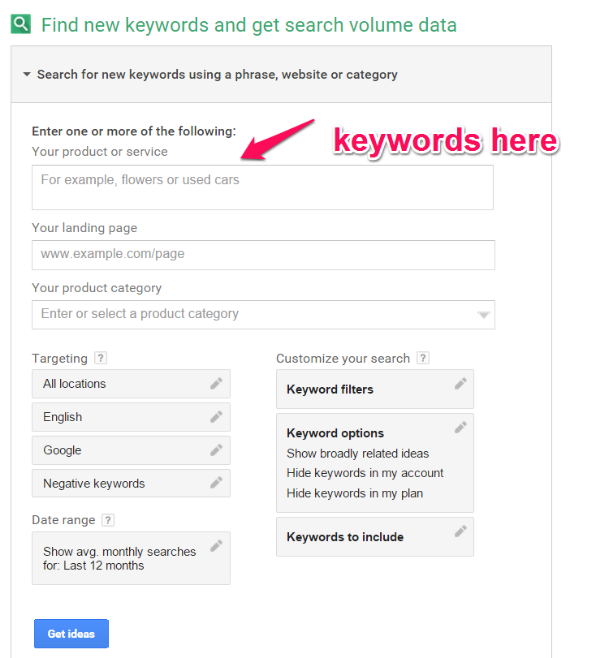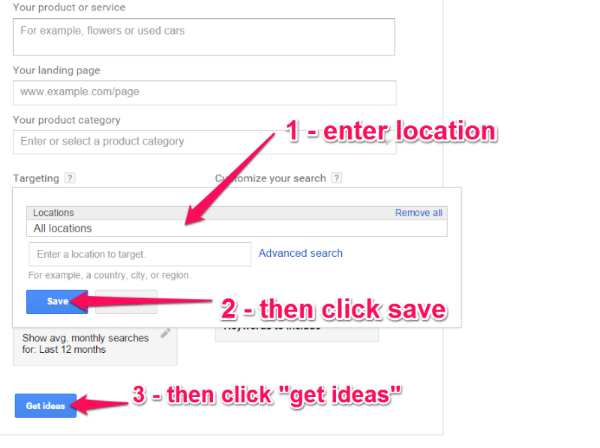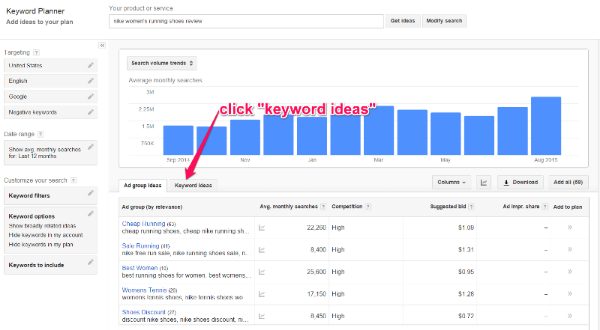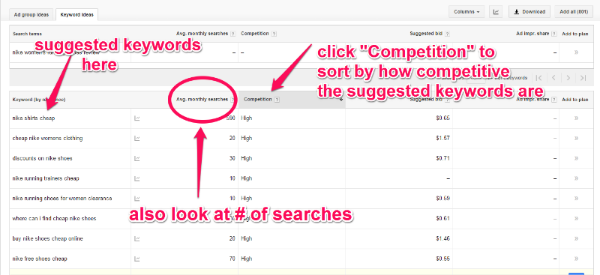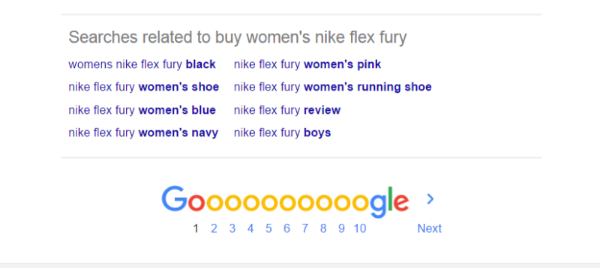A certain mystique has developed around search engine optimization (SEO).
It’s understandable, when you consider that the details of how search engines go about indexing and ranking web pages are quite literally super-secret, kept under lock and key, protected by multi-million dollar non-disclosure agreements.
And that mystique has left many small business site owners struggling to get found in search results by potential customers.
Even site owners who have embraced content marketing, which makes it much easier to rank well in search engine result pages (SERPs), inevitably feel frustrated and overwhelmed by complicated and often contradictory SEO advice.
Many content marketers perceive SEO to be highly – even impossibly – technical and hopelessly complex, requiring all but the savviest of tech experts to hire expensive SEO consultants.
And that perception unfortunately leads to some site owners concluding that SEO – or at least the SEO consulting world – is just a scam.
The reality, however, is that SEO doesn’t have to be either of those things – although it is a new skill set for most small business marketers.
While there are many factors, both on-page and off-page, that determine where Google will rank one of your pages in SERPs, one of the most important factors is keyword usage.
But it’s not as simple as stuffing your page’s content full of your chosen keyword – and in fact, doing so can actually get your page penalized by Google, which could push the page far down the SERPs, or even take it out of results altogether!
That’s something you want to avoid at all costs, of course.
A solid keyword strategy starts with keyword research, which has also suffered from that “way too complex” reputation. So in this post, we’re going to napalm that highly-technical veneer and peel back the subject to its simplest and most effective basics.
If you consistently implement the strategies and techniques outlined here, and continue to create the highest quality content you possibly can, you’ll see your rankings improve, along with search traffic, conversion rates, and revenue.
So let’s demystify the process of keyword research. But first, we need to understand why it’s so important.
Why You Should Research Keywords
If you’ve been paying even a little bit of attention to the world of search engines, you probably noticed that search in general, and Google in particular, has undergone a bit of a revolution lately.
it used to be that all an ambitious site owner had to do was plug in a few keywords in a set of H1 tags and a boatload of keywords in the meta tag, sit back, and watch users stampede the site.
These days, meta keywords are ignored, and it’s not enough to put top-level keywords in the title or headline of a piece of content.
But keywords are still critical – yep, even after Google rolled out Panda and Penguin and Hummingbird (oh my!), which were the key updates and changes that effectively retooled Google’s ranking process.
Enter keyword research.
See, keywords – that is, the words and phrases a search user types into a search engine to look for specific information – are still the key to the algorithm. Functionally, keywords “tell” the search engines what your page is about and help algorithms match your page with a search user’s queries.
The ultimate point of keyword research is to find out exactly what your users and leads are actually searching for, so you can create the content that best matches their needs. In other words, we want to know, rather than guess, what keywords our targeted audiences are actually typing into Google, Bing, or some other search engine.
And the only way to know for sure is to do some keyword research before writing the next blog post.
The key thing to keep in mind (pardon the pun) is this: SEO isn’t like a recipe. In other words, you’re not putting together various ingredients knowing that you’ll get a single, desired result
Rather, SEO is really more like taking a test. The more questions you answer, the higher your score will be – but you don’t have to score 100% in order to pass.
In fact, there’s a law of diminishing returns at work in the world of SEO – at least, assuming your job isn’t “SEO consultant.” For the majority of small business content marketers, time is at a premium, so whatever time you spend should yield equivalent returns.
Yes, “answering more questions” may get you a higher grade, but at some point the added benefits become increasingly incremental. So there’s a point at which further tinkering and optimizing may not be worth your time.
In other words, SEO isn’t an “all or nothing” game.
But no matter how many factors you wind up optimizing for your site, there’s one thing that you can’t ignore, and that’s – you guessed it – keywords.
All of which raises a somewhat basic question, but it’s a question that deserves an answer before we get into the nuts and bolts of keyword research – namely, what exactly is the point of keyword research? Put another way: What exactly are you trying to find out?
To answer that question, we need to understand how search engines work in the context of content marketing.
How Search Engines Work & Where Keywords Fit In
The basic processes of a search engine are fairly simple:
Spiders (little bits of code) go out periodically to crawl all over the web, looking for changes. Those changes can be new sites, new pages, or any change to an existing site or page.
The spiders pull information about the page from the page’s HTML code, including the content on that page that it can see (basically, text).
All that information retrieved by the spiders then gets dumped and sorted into the search engine’s database – i.e., the pages get indexed.
That’s the first process, known as “indexing.”
The second process is triggered by a search user, who comes along and types in a search query – keywords – and hits the enter key. At that point, the search engine runs an algorithm to evaluate and rank all the pages it’s indexed that match that query in any way.
Then the search engine displays the results for the user, ranked in order from 1 to 10 on page 1, 11 to 20 on page 2, etc.
Here’s the secret that far too many content marketers still don’t get: The search engines do not care about you, the site owner.
It only cares about the search user.
So, the search engine’s ultimate goal isn’t to punish the sites it “hates” or reward the owners of the sites it “likes best.” It doesn’t care about you, the site owner/content marketer, at all. Not even a little bit.
All the search engine wants to do is to return the absolute best sources available for the specific information the search user requested.
That’s it.
Now, that might seem simplistic. But if you think about it, understanding this one simple truth about search engines unlocks everything about improving your search rankings.
In other words, if you want to rank in the top 10 for your chosen keywords, all you need to do is provide what the search engine is looking for – the very best information available on that topic – and do everything you (reasonably) can to make sure your page is indexed and ranked accordingly.
Keywords on your pages are how the search engines begin to evaluate them to determine that appropriate ranking. Of course, there are lots of other factors, too. But if your page has zero instances of a particular keyword, your chances of getting that page to show up in search results for that keyword are pretty low, if not zero.
So, yes – even after all the algorithm updates, keywords still represent one of the most significant factors in SEO. By placing your selected keywords in specific locations in your page’s content, you help the search engine rank your page more highly.
What are those specific locations?
- Headlines or titles (the H1 tag in your HTML code)
- Subheadings (H2 and H3 tags, usually)
- The body (i.e., the “meat” of your page’s content, usually found in the paragraph tags)
There are other places you can put keywords, of course, but these are the most visible, and the most significant in the indexing/evaluating process.
Long-Tail Keywords vs. Head Keywords
Keywords can be loosely grouped into two categories.
Head keywords are the top-level, broad, topic-based keywords you’d use if you need some help to find a starting point for your search. Examples would be things like “cars” or “attorneys” or “shoes” – or even “running shoes.”
Head keywords are very general. They’re the equivalent of the top-most level of an outline. And you will never, ever, ever rank highly for them. There’s just way too much competition.
Long-tail keywords, on the other hand, are all about specificity. They’re longer than head keywords – sometimes a lot longer, but at least three words long – and they’re your ticket to the fabled “top ten” in SERPs.
So, using our earlier head keyword examples, our long-tail variations could be things like “2012 Audi A4 for sale Los Angeles” or “divorce attorney child custody dispute Raleigh NC” or “Nike women’s flex fury discount.”
As WordStream put it, long-tail keywords are “a better way to connect with customers.” Why is that?
Well, the primary difference is in the level of competition. Simply put, there are way too many other sites out there competing to rank highly for “cars” and “attorneys” and “shoes.” The longer-tail your keyword, though, the less competition you’ll face for it.
Yet, despite this fact, long-tail keywords can help you generate a pretty sizable amount of search traffic, assuming your content is high quality. As it turns out, head keywords only make up a pretty small percentage of searches – maybe 10% or so – and mid-tail searches about 15%.
That means that all the rest – the overwhelming majority of all searches – are long-tail keyword searches, so you have a lot more chances to rank well for them.
Now, it’s also true that the volume for any single long-tail keyword search might be relatively small.
However, again, the number of people competing for the traffic from that specific long-tail keyword is also much lower. Ergo, less competition = more chances to rank.
This isn’t fringe science. Even Amazon gets it – the world’s premiere shopping site gets over half of all its sales from long-tail keywords.
But that’s not the end of the benefits from long-tail keywords. As Neil Patel observed, you also get a major boost in the likelihood of converting traffic from that long-tail search, as compared to your chances of converting from a head keyword search:
Additionally, adopting a long-tail keyword strategy generally leads to creating more pages – which makes sense, right? The more specific your topics – the more narrowly you slice your post topics – the more content you create to fill the gap of your niche. And the more pages you have on a site, the more Google likes and rewards your site as a whole.
That means all your pages get a boost.
But, wait – there’s more!
As it turns out, long tail keywords also represent something that makes your job as a content marketer a whole lot easier: the user’s intention to purchase, and purchase soon.
Commercial vs. Informational Intent
Another distinction between different types of keywords is arguably even more important for the content marketer. That distinction is the difference between commercial intent and informational intent.
And as Bryan Dean from Quicksprout said, “Search volume is an important metric when determining the value of a keyword. But it shouldn’t be the only thing you use in your keyword decision making process. You also want to factor in commercial intent.”
In a nutshell, commercial intent means that the searcher is ready to buy, or is really close to that point. Informational intent, on the other hand, simply means the searcher is conducting research of one kind or another. They need more data, and critically, that means they aren’t yet ready to buy.
Why is this important? Simple: The more commercial intent a keyword demonstrates, the less work you have to do as the content marketer to persuade them to buy.
That right there is everything. It’s the whole ball of wax. After all, a megaton of search traffic won’t do you a bit of good if the page that traffic is coming to can’t convert those visitors into customers or clients.
Basically, if you can figure out what the intent behind a keyword is, you can make your content match the intention. That will increase positive responses, raise engagement, and improve your conversion rate on that page.
And in time, those benefits lead slowly but surely to higher search rankings and increased search traffic.
Some examples of both types of keywords might help.
Let’s say you’re in the hosting niche. A keyword such as “What is web hosting?” or “Do I need a hosting account?” is purely informational. The user is doing research, or just wants to find out more. Crucially, this user isn’t ready to buy yet.
But that doesn’t mean the informational keyword is without value. After all, the whole point of content marketing is to provide value to the user -by answering their questions, or solving their problems – and in the process, creating an aura of expertise and trustworthiness around your brand, so that when the user is finally ready to buy, they think of you first.
So, you would then create some high-quality, well-written content around those informational keywords, answering each question in a separate page, and provide a call to action for the reader to join your mailing list, perhaps in exchange for a “hosting buyer’s guide” checklist you’ve created.
But as valuable as the right informational-intent keywords can be for a content marketer, the real money is in keywords that demonstrate a commercial intent.
So, for our same hypothetical hosting provider, “best web hosting in US” or “compare reviews hosting companies” tells us that this user is ready, or nearly ready, to actually make a purchasing decision.
if you can get that content in front of them, and they like what they see, then you stand every chance of making that sale.
How can you spot commercial intent keywords? This is somewhat subjective, as you can probably see from the examples above. However, the presence of a brand name or a specific item name or description, plus any of the following words, is a pretty good indicator of a commercial intent:
- reviews
- discount
- best
- pricing
- buy
- deal
- “free shipping”
- purchase
- “coupon code” (or “promo code”)
- order
Finding the keywords with any of these words then lets you create the right kind of content to reach these searchers and close the sale.
How to Find Commercial Intent Long-Tail Keywords
There are lots of ways you can go about looking for the right long-tail keywords showing commercial intent for your niche.
One super-easy and completely free way to go about it is to use Google’s auto-suggest tool. Simply go to Google, begin typing in a head keyword that’s associated with the topic you’re planning to write about, and let Google “suggest” different options.
Sometimes this works great, and it’s all you need. However, it only gives you a few suggestions – 3 to 5, usually – and even more importantly, it doesn’t give you any idea of how many people are searching for this keyword or phrase.
A slightly more robust tool is UberSuggest, which takes the head keyword you provide and gives extensions and longer tailed versions based on actual user searches.
Simply go to UberSuggest, and enter in a head keyword that’s related to your topic. Select your language and your preferred source (“web” is the default and works for your purposes). Then click the “Suggest” button underneath.
UberSuggest will then provide a list of long-tail variations for you, categorized by the addition of a letter or number, along with how many variations of your original head keyword it found:
The majority of these may not be right for your site at all – but some of them will be.
One word of warning is appropriate here – or rather, two words: negative keywords. By default, UberSuggest includes words that you’d do better excluding entirely, as they negate commercial intent entirely. The biggest example is the word “free.”
The rationale is probably obvious: If a person is looking for “nike women’s running shoes FREE,” they’re probably not all that interested in shelling out actual money for them. (That’s a silly example, but let’s stick with the theme.) They’ll never convert – or if they do, you’ll have to work extra hard against the searcher’s intention to overcome that “I want it for free” bias.
While UberSuggest includes keywords like this by default, the Google AdWords Keyword Planner can exclude them for you. So let’s look at it next.
Once you have a list of possible long tail keyword ideas, go to Google AdWords’ Keyword Planner. Sign into your Adwords account and go to Tools > Keyword planner. Find and click on “Search for new keywords using a phrase, website or category.”
Plug in a keyword that looks like a good potential fit for your niche and your content needs. Set your location, and if you like click the pencil icon next to the “Negative Keywords” label to instruct the tool to omit “free.” Click “save” after each adjustment, then click “Get ideas.”
Your results will look something like this initially – click the “Keyword ideas” tab to show a ranked and sortable list of suggested keywords:
After you click the Keyword ideas tab, you can then click on any of the column headings to sort by that metric.
High competition means more people are trying to match that keyword in their ad copy. The more competition a keyword has, the harder it will be for you to rank well for it.
Since we’re not creating ads here, that’s not quite as important or relevant, but it can give you a broader idea of the keyword’s perceived popularity among others in that niche.
What you really want to pay attention to is the average number of monthly searches. You want to make sure you’re aiming at a keyword that has a sufficient number of people searching with it that it makes sense to write content targeting that keyword.
You may want to go for keywords with less competition – which often means longer tail versions – because they’ll be easier to rank for.
Next, copy a keyword that you want to consider, then in a new tab head over to Google and plug it in. Scroll down to see “Searches related to” your original search.
You can even keep going further. Find a related search, copy it, paste it back into the search bar, scroll back down to “Searches related to,” lather, rinse, repeat. Voila – all the long-tail commercial intent keywords you could possibly want.
What if you want to go beyond traditional keyword research tools and methods? Can you go straight to the horse’s mouth, so to speak? Can you find out directly from your targeted audience what they want to know or learn about?
You bet! Forums, message boards, question-answering sites such as Quora, Facebook groups and LinkedIn groups are great sources of potential keywords, if you know what you’re looking for.
Start by finding groups that match your niche. Specifically, you want sites or communities where your targeted audience naturally congregates and interacts around your topic.
Once you find a group or site that seems to fit your criteria, look through the subject lines or updates for posts that pose questions related to your niche. Then reduce that subject line or question to a long-tail keyword format.
Let’s look at an example of how this might work. Let’s say you run a healthy-cooking site, targeting young people who are single or married and single parents with a few kids. You find a message board where participants share recipes and tips.
A post with a subject line like “Need vegan gluten-free recipes for 2 that my kid will actually eat” is a gold mine for you You might never rank #1 for “Vegan Recipes.” Or even for “Vegan Recipes for 2.”
But “easy cheap vegan gluten-free recipes 2 people”? That’s a target you can hit dead center.
So get creative. Remember the whole point is to answer the questions your target audience most want answered, and to solve the problems that keep them up at night. Any place where those questions and problems are shared is a potential keyword research source for you.
When You Don’t Need Keyword Research – or Keywords
Here’s a question: Do you have to do keyword research and include them in your copy?
Well … no. Maybe.
For most pages on your site, you want to rank well for keywords representing the main topic of the page, or the product for sale on that page.
But for some pages, keywords and keyword research may not even be necessary.
One very specific example of a type of page for which keyword research may be superfluous is the manifesto post or personal essay post.
These kinds of content tend to be deeply personal and purely motivational in nature. As such, in some cases, authors of these types of posts will be heavily dependent not on search traffic but on social shares and other forms of digital word-of-mouth.
If that’s the case for you, by all means, skip the keyword research. Instead, focus on writing passionately and with authenticity, and then on promoting the heck out of your manifesto on social media and through influencer outreach.
But then again, if your essay or manifesto is targeted at rallying the “troops” to think differently or do differently with respect to a specific issue, some keyword research and usage might be beneficial.
It’s completely up to you. But if you want any kind of search traffic for your page at all, then even a minimal amount of research and strategic placement of keywords will serve you well.
Conclusion
Now that you have researched keywords, what do you do with them?
Remember as I wrote above: The ultimate point of keyword research is to find out exactly what your users and leads are actually searching for, so you can create the content that best matches their needs.
Use the keywords in your content, but above all make sure that your content flows naturally. Keyword stuffing is a lousy way to get to the top of the SERPs but a great way to get yourself dinged with a Google penalty.
To check your content for keyword stuffing, read your content out loud to see if it flows naturally. If it sounds stilted, awkward, or just plain weird, you probably have a keyword repetition problem. Try trimming your keywords back by 30%, then read it aloud again and see if it flows better.
Over to you! What are your favorite methods and tools for keyword research?



